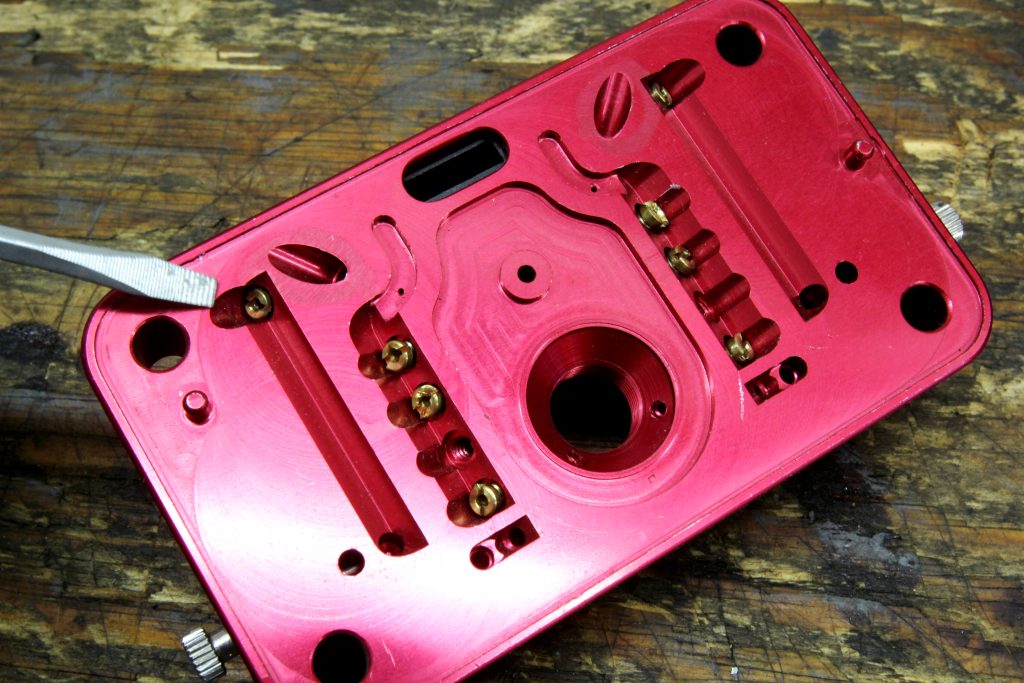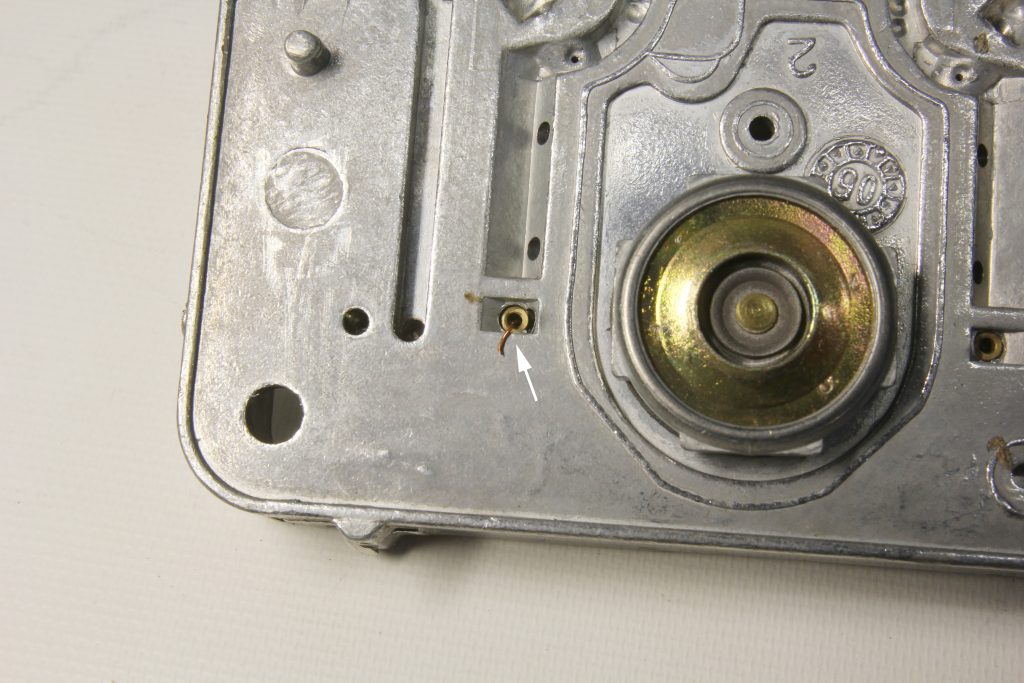I recently bought a used 750 cfm Holley double pumper carb at a swap meet and bolted it on my small block. The engine idles really rich and will literally make my eyes water if left in the garage idling. A friend told me that if the carb has a low enough rated power valve that the power valve will open and make the engine idle rich.
I’m running one of those Comp Mutha Thumpr cams and I know it idle vacuum is really low. The power valve opening point is close to the idle vacuum so I replaced it with a lower rated power valve but that didn’t help. Am I doing something wrong?
M.V.
***
What you’ve just outlined is a very common misconception that has somehow managed to survive the 21st Century. On the surface, it sounds logical that if the engine idles at 8 inches of manifold vacuum (8” Hg) and the engine has a power valve rated to open at 9“ Hg, then the power valve would open.
Truthfully, the valve will open.
However, this does nothing to affect the idle circuit. The power valve is tied directly into the main metering circuit in a Holley carburetor. This means that when the power valve opens, it will feed additional fuel (determined by the size of the power valve restrictors) into the main metering circuit.
But when the engine is idling with the primary throttle plates closed, the main metering circuit is not flowing any fuel. The main metering circuit requires the throttle to be opened far enough to produce sufficient air velocity to create a low pressure signal to the boosters to flow fuel through these boosters. With the main metering circuit in operation under load, if manifold vacuum is lower than the power valve’s opening point only then will this feed additional fuel through the boosters.
You should be able to tell from this description that the power valve opening has no connection to the idle circuit. This is because these are two completely separate circuits. So you can use any rated power valve in your carburetor and it will not affect the idle quality.
Finding the Cause of a Rich Idle: Fuel Pressure & Float Height
Now that we know that the power valve has no affect on idle (assuming it is not leaking), we should address your existing problem of a rich idle. You didn’t mention exactly how you have adjusted the idle mixture. Before we get into that, let’s make sure the rest of the carburetor is in good shape.
Let’s first address fuel pressure. Even if your engine is fed with a mechanical fuel pump, it’s a good idea to check the fuel pressure at idle. We’ve seen stock replacement mechanical fuel pumps make more than 7 psi. This is too much pressure. A more conservative number would be 5 to perhaps 5.5 psi at idle. If the idle pressure is too high, you will need to install a fuel pressure regulator between the fuel pump and the carburetor inlet.
With the fuel pressure under control, now we can look at the float level. If yours is an older Holley with the removable brass sight plugs on the side of the float bowl, with the engine idling, remove each plug and fuel should dribble out of the bottom of the hole. If the float level is too high, fuel will run out and you will need to lower the fuel level to the proper position.
If you have a newer Holley with the larger glass sight holes, the process is different. Set the float level to the middle of the hole or slightly lower.
Float level is important because a higher fuel level exerts additional hydrostatic pressure on the idle circuit and the circuit will idle richer. Conversely, a lower float level will have a leaning effect on the idle circuit.
Finding the Cause of a Rich Idle: Setting the A/F Mixture
With the above completed, now we can address setting the idle mixture. The best way to perform this process is to use a low speed tach and a manifold vacuum gauge.
Before starting the engine, carefully screw each idle mixture screw inward, clockwise and count the number of turns. We will assume your carb is equipped with four idle mixture screws instead of just two but either way the process is the same. Make sure to start by balancing all four screws so they are adjusted the same.
With the engine idling at normal temperature, slowly turn each screw inward a small amount. We like to adjust each idle mixture screw no more than the width the screwdriver blade slot. That’s like 1/64th of a turn. This is a very slight adjustment so you must be patient. Note if the idle speed or the manifold vacuum increases. If it does not, adjust each screw again the same amount until you notice a difference in either idle speed or manifold vacuum. If the vacuum increases, then you are adjusting the right direction.
If the idle speed falls or manifold vacuum becomes erratic, then you’ve adjusted each screw too lean. You will then have to adjust the screws back outward slightly until you achieve the highest idle rpm and highest manifold vacuum.
Once this is achieved, note the number of turns the idle mixture screws are turned out. If the adjustments are less than one full turn out, this is a good indicator that the idle feed restrictor is too large on this carburetor. Think of this idle feed restrictor as the main jet for the idle system.
The idle feed restrictor is often located near the bottom of the metering block but sometimes it is moved toward the top. We will show photos of these locations to help you find them.
Finding the Cause of a Rich Idle: Adjusting Fuel Flow
Assuming we need to reduce the fuel flow from the idle feed restrictor, the best way to adjust this is with a screw-in jet that is used on the more high-end Holley carburetors. It’s more likely your carburetor is fitted with a pressed-in, fixed idle restrictor. In this case, you need to determine the inside diameter of the brass restrictor. Let’s assume for this discussion that it is around 0.034 inch, which is somewhat large.

A quickie fix is to find a 14 gauge multi-strand wire and strip out a single strand that will be roughly 0.015-inch in diameter and about 3/4 inch long. Bend this wire into a j-shape and place the long end into the idle feed restrictor. Make sure to position the wire through the restrictor. This will reduce the area of the restrictor and reduce the amount of fuel supplied to the idle circuit.

Do this on both sides of the primary metering block and also on the secondary metering block if your carb has four idle mixture screws.
This will require you to now re-adjust the idle mixture screws slightly richer to allow the engine to idle properly at the highest vacuum. This restriction will give the idle mixture screws greater adjustability for the slightest movement and should produce a better and much leaner idle mixture. This should eliminate or at least improve the rich idle smell which is literally unburned fuel exiting the exhaust.
This will also clean up your spark plugs, reduce carbon buildup in the cylinders and reduce the amount of unburned fuel present in your engine oil which should be a real concern. If your carburetor is not fitted with a choke, you will notice that the engine will now be a bit cold blooded and won’t idle without help from throttle until the engine begins to warm up. This is a clear sign that you have the idle adjustment properly set.
If the engine idles when it is cold without the use of a choke, the idle mixture is too rich.
This should get your carburetor dialed in for the idle circuit. There are other factors that will affect this function but reducing the fuel flow through the idle feed restrictor is the main step in this process.

Comments